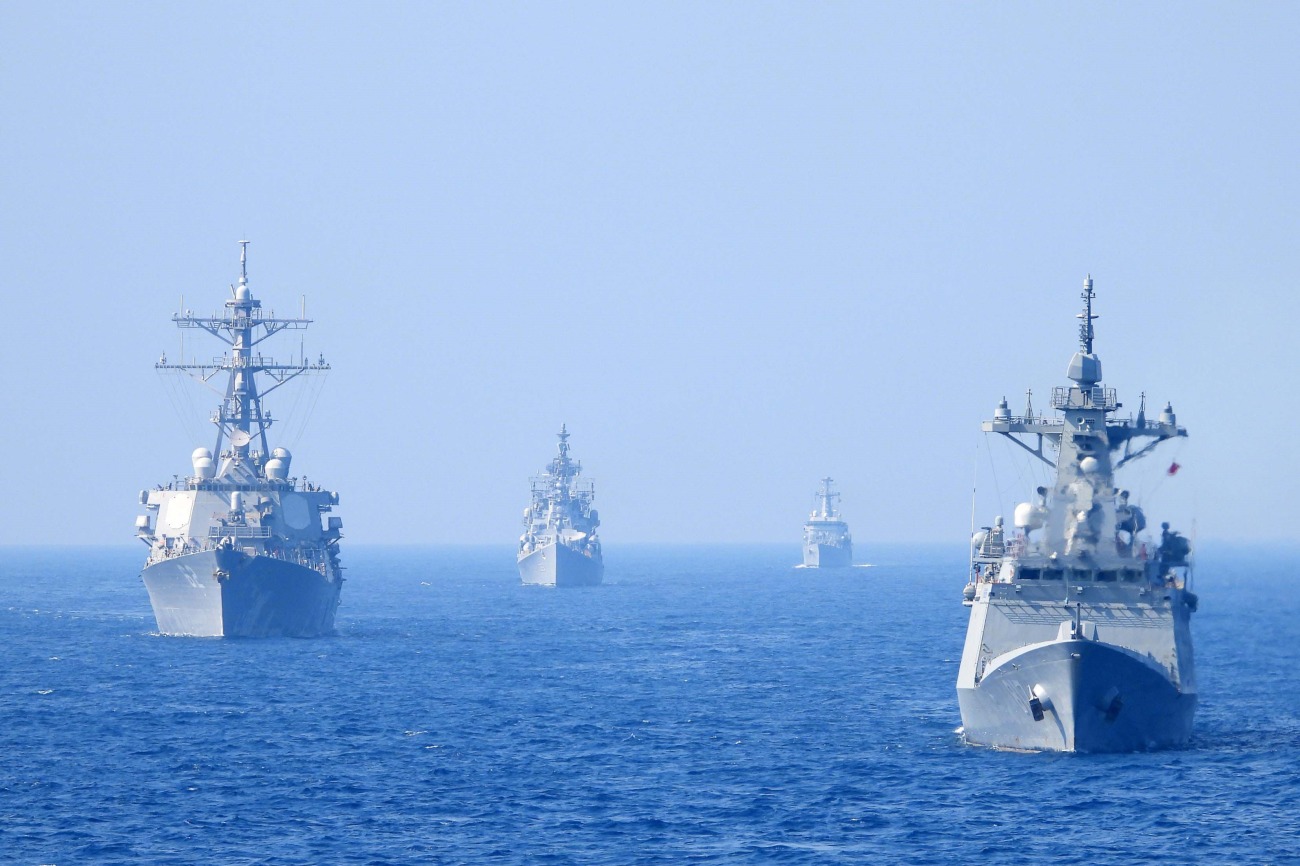OPED By Commodore G. Prakash (Retd)
Militaries are meant to deter war. However, even the strongest among them aren’t succeeding in this in the Red Sea or Gulf of Aden. Even coalitions of modern navies have not been able to deter the Houthi militia from mounting their near-daily, increasingly audacious attacks, even against US Navy ships.
How can merchant ships operate in this condition?
The Red Sea and the Gulf of Aden are only the latest spots where extreme danger has manifested for merchant ships. Seafarers have braved violence throughout history. Robbers who target goods, pirates who hijack ships and crew for ransom, they have seen it all.
While it was piracy by Europeans in European waters and later globally until the 18th century, the scourge has recently afflicted the African coast, Arabian Sea, Bay of Bengal, Malacca Strait, South China Sea, and the Caribbean. Memories of the last flare-up off Somalia and the NW Arabian Sea are still fresh.
The current Red Sea/ Gulf of Aden episode is different from previous episodes in a major way. It is in the nature of the enemy—a battle-hardened, ideology-driven non-state actor who is willing to die for a cause.
The advantages of geography, support from ideologically aligned entities, and the moral strength arising from the confidence that their fight aims to correct a colossal wrong that the whole wide world looks unable to stop further strengthen them.
Possible selfish motives aside, they currently present a real challenge to the world’s seafarers and the global economy. The choppiness they cause in the oceans is something that pirates and narcotic/gun/human traffickers can also exploit. How much can nations and their navies help here?
Houthis Vs. Modern Navies
In the last five months, the Houthis have attacked, abducted, sunk, or damaged merchant and naval ships. All this, using refurbished obsolete weapons and some new technologies like unmanned craft.
By occasionally attacking ships that do not fall under their declared targets, viz, connected to Israel, USA, or UK, they have even gained the strengths that irrational rationality brings to perceptions.
Many nations have fielded their navies at the epicenter of this conflict. Their performance has been mixed. While many slow-moving and noisy UAVs and short-range ballistic missiles have been shot down, on occasion, mass attacks have managed to inundate even the most advanced anti-air systems, causing damage.
In a committed attack, some will get through, whatever the odds. However, the unsustainable asymmetry of the costs involved dims the elation of successful UAV and missile shooting downs.
Sooner or later, cost considerations will cut in. How long can $2.5 to 4 Million missiles be used to shoot down $20,000 UAVs? There has been at least one reported instance of a modern warship running out of ammunition after a short engagement. There are public protests in one country which has deployed a ship. How long that ship will stay put is uncertain. Domestic politics will dictate that.
Coalitions, too, have problems. One is the exchange of top-secret data. At least one reported instance involves a ship almost shooting down a friendly UAV because the IFF code was not shared.
This is a repeat of the Gulf War. Every Navy is deployed with very closely guarded Rules of Engagement and Desired End States, which draw red lines that reflect their country’s political stands.
As the intensity of conflicts changes, coalitions might come apart owing to incompatibilities in deployment orders. Coalitions may also suffer from changing political regimes in important countries. Mr. Trump’s stated intentions regarding NATO are a case in point.
What Are The Solutions?
So, what can militaries in general and navies in particular do? The futility of bombing land targets or putting boots on the ground is well known. That leaves the problem to Navies.
For them, as of now, all attacks have been either on the surface of the sea or from the air. These don’t bother warships too much. It takes multiple missile hits to seriously damage a warship. They are designed to get in harm’s way and have the necessary damage control and survival mechanisms.
However, the situation changes dramatically when the enemy starts underwater attacks. Even in the conventional world, underwater warfare is extremely tough, and it becomes a nightmare when the enemy uses underwater drones.
Even the most modern navies do not have a foolproof method to detect and destroy underwater drones in a kinetic environment. This danger is best avoided, and navies may do just that. The Russian Navy has done exactly this in the Black Sea. Where does that leave merchant ships? Are there lessons in history?
History Is A Good Teacher
110 years ago, the Germans pioneered submarine warfare to overcome the disadvantages their geography posed to the effectiveness of their surface navy.
The Western world searched for solutions in panic as submarines, torpedoes, and mines began to sink their ships. Those submarines were crude and mostly surface-bound, and convoys of merchant ships and physical countermeasures like booms and nets worked against them.
However, by WW2, submarines had matured, and the protracted Battle of the Atlantic caused untold destruction. Though submarines and ASW have evolved tremendously since then, the dice are heavily loaded in favor of submarines. This loading gets deadlier when the underwater threat becomes more difficult to detect and repel.
Where does that lead us? Resurrect convoying? That won’t assure success. Not even for the escorting warships. What else? Surely, the world will find solutions. However, desperate states and non-state actors will always find ways to stay one step ahead of established formal entities like states and militaries. But states and militaries will, rightfully, continue to fight. But can we take a chance with the safety of the merchant marine? We can’t.
So, what do we do? Should we arm merchant ships like we did during the world wars, with limited success? Maybe we shouldn’t. The crew of armed merchant ships is not likely to be treated kindly by their captors if they fall into their hands.
The best lesson from history is that a bouquet of options gives the best results: armed guards, anti-boarding measures, rerouting, accepting advisories, Navy escorts, and whatever might emerge, like physical obstructions against underwater threats.

Political Solutions Work The Best
As I write this piece, X is agog with the news that the Houthis have promised to target ships diverted around the Cape of Good Hope, too. Where does it all end?
Depleting Houthi weapons and preventing their replenishment or giving them a reason to cease hostilities with some sort of settlement in the Gaza conflict appear feasible solutions. However, such conflicts are here to stay. Neither the UN nor the veto powers appear capable of changing the behavior of even the unruliest belligerent.
Emotional rhetoric, pride, or denial won’t solve problems. Pragmatic political solutions alone can bring lasting peace to conflicts emanating from ideological differences or historical disagreements.
There has to be a give-and-take. Military solutions don’t work in these cases. The merchant marine may have to adjust to operating in an atmosphere of strife. The Navies of the World will support them as much as they can.
- Commodore G Prakash (Retd) served in the Indian Navy for 35 years. A specialist in Naval Aviation (Sea King Helicopters) and ASW, he has been the Captain of three warships and has commanded four shore establishments.
- The author can be reached at gp1064 (at) gmail.com
- Follow EurAsian Times on Google News




